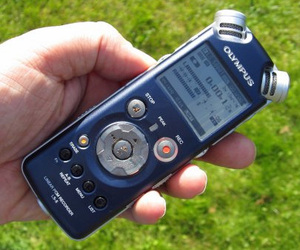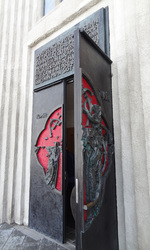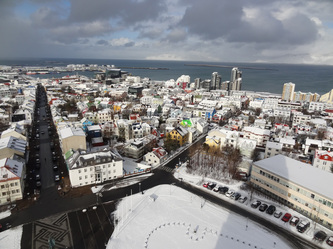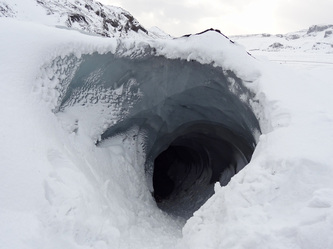 If you're of a certain age, you will remember promises being made long ago of how simple our lives would be made by the advent of the Digital Age. Society, we were told, would become paperless, and we would enter a Brave New World of information retrieval and convenience. And so it came to pass. Mobile phones are now smart. Music is instantly available and extremely portable. Computers and tablets and notebooks and iPads keep us constantly in the loop and all the information known to mankind is stored in the Cloud, ready to be retrieved at our whim by Google search. Why, then, was I so afraid when I was cleaning out the closet and came across a large, closed box? Well, it wasn't exactly closed. It was too full for the lid to fit tightly and its overflowed content threatened to twine around my arms like an Evil Constricting Vine as envisioned by a Hollywood special effects master. Then - disaster! I dropped the box and the malevolent mass was free on the floor. I was looking at every piece of wire that ever came into the house with a new electronic gadget. We all have nests of these orphaned snakes of plastic coated copper in the house somewhere. At least I hope we do. I'd hate to think I was the only one who is afraid to throw away a perfectly good piece of technology, especially when it comes wrapped with a twist tie and so nicely packaged in a little zip-lock baggie. And what about all those poor under paid Chinese children who toil night and day to produce these cables and connectors and power cords? How can I not value their efforts? But what do you DO with these things? Every time you purchase a new device, it comes with more cables than you need, because the cables from the old machine you are replacing still work just fine, thank you very much. I learned a while ago to keep the ones I use frequently slung over the door to the computer cabinet. That way when I want to upload photos from my camera (mini USB to USB in computer) or sync my iPod (stupid Apple has to use proprietary plugs different from everyone else in the world), I don't have to dig through the smaller stash of rechargers and connectors I keep in a drawer. But these things spawn in the dark. And like some new archeological find, their purpose is lost in the mists of time. There's a plug on one end. Fine. That one is easy. It goes in the wall socket. The other end presents more of a challenge. It's round but it doesn't appear to fit into the hole of any electronic gadget I currently own. And the square transformer box on the wire is no help. All it says is "Class 2 power supply. WARNING ..." and then goes into a bunch of electrical jargon that I feel stupid for not understanding. I can't throw these things away. Perhaps I'm a secret hoarder. I cried out for help once. I took the entire box to a computer repair man and told him to take anything he would find useful. He looked at me with pity and revulsion, and said that they hadn't manufactured the Commodore 64 since 1988, and it was probably safe to get rid of that one. The Digital Age has, to an extent, gone paperless. Instead we are left with a plate of electronic spaghetti which I think is harder to get rid of. But this time I'm not going to put the box back in the closet. Oh, no. I think I'll have my husband carry it to the basement instead.
4 Comments
 How often have you gone to a concert or session to have the performer say something along the lines of "I got this tune off the legendary Joe Pat O'Shaunessy one night we were locked in at the aulde Harp and Pint Pub in Bailebeag, Co. Donegal. He was a fine fiddler so, and now his grandson is grown and teaching this same tune to his own children." Do you feel inferior yet? How many of the tunes you know did you learn at the knee of some Jedi Master of Irish music? This is the dilemma that we, as musicians who play Irish music but whose parents had the misfortune not to birth us somewhere in rural Co Kerry face daily. Ah, the shame! We have rhythm but our parents didn't. What is a poor American (Irish) musician to do? We work with what we have. We turn to technology. It starts innocently enough. You buy a CD or download an mp3 file of a couple of tunes that strike your fancy. I'm going to learn that set, you think. But wait, the tune rushes past your ears faster than the beer you just drank requires recycling. Was that da da da DA da DAAA ~or~ da da DAAA da da DAAA?, you ask yourself. Well, there's software for that. Some people swear by the Amazing Slow Downer, but for ease of use and added features I personally prefer Transcribe! Despite the name, Transcribe! does NOT actually transcribe the music into notation. (There is a software that does that - TwelveKeys - but I've never used it so I can't speak to it's functionality.) With Transcribe!, you can slow down any music file on your computer or change the key it's played in without hurting pitch in the least. The tunes work best. If you try the program on a song you get an amusing reverse homage to the Chipmunks. Oh, no, no!, you say. I learn MY tune sets the old fashioned way -- by going to sessions. All I can say is you must have a phonographic memory. Or a really good digital recorder. Some people have good luck using their iPhone recording app, but I think I must be dumber than my smart phone. The choice of digital recorder is as personal as your comfort level with the number of buttons you have to push to get it to work. Personally, the less I have to manipulate small switches or touch screens in a darkened pub after having a beer or two the better. I own the Zoom h4n. I find it a bit difficult to operate quickly, but if you are less technologically impaired than me and do manage to get it running in a timely fashion, the sound fidelity is great and it's easy to upload the files to your computer. The only other downside is that the unit itself is very bulky. It's really hard to be inconspicuous as you set it up and get it started. I recently purchased the Olympus LS-5, which is much smaller than the Zoom, and promises to be much easier to use. (Strangely enough, I found this unit for more than half the price of Amazon.com at an online record shop in the UK, even after the shipping. Go figure!) The Olympus model has a lot fewer buttons to push - so far so good. I'm not saying that I've got the best recorder going, I'm sure there are very good ones out there that I don't kow about. If you'd like to check out a nice comparison review of other models, click here. There's An App for That: You're at your Thursday night session. The group swings into a tune you KNOW you know. But you can't for the life of you remember what the name of it is. It's driving you MAD. Well, there's an app for that too. It's called Tune Pal. It's a digital version of the old TV show "Name That Tune". All it needs is a few bars of the tune to identify what's playing. In fact it's so accurate that there are people who try to play very obscure tunes just to see if they can stump the Tune Pal. And not only will it identify the tune, it will give you the ABC notation as well. It's available for iPhone, iPad, Android and you can use it on your PC if you have a microphone hooked up. And just last month a new app came out, created by an Irish woman, and performed by a 15 year old girl from Cork called "Irish Fiddler". There are also apps for tuning your instrument, Metronome apps, Guitar Tab apps and so very much more.
Things change. You can't smoke in the pubs anymore. The Celtic Tiger is now a scarred old tabby cat. And in Ireland, pubs are closing at the rate of one every two days. Pretty soon that dark, sticky old pub won't even be there to house the current Fiddle Hero. Traditional music isn't really learned in the traditional fashion any longer, even in Ireland. We are the test tube babies of Irish music. It doesn't make us any less legitimate so long as re respect the music. Welcome to the digital age. PS - I'd love to hear what devices you use to help in your study of the music. If there are enough responses, I'll update the blog to include them. According to the Icelandic government website, on January 1, 2012 the population of Iceland was 319,575. That’s about the population of St. Louis, Missouri, spread over an area equivalent to the state of Kentucky. In other words, it’s small. And all I really knew about Iceland before I traveled there was: 1. They had a volcano that had erupted in 2010, the ash from which closed airports around Europe, and nearly cancelled a trip I had planned to the UK, and 2. During the 2008 World Banking Crisis, the Icelandic government had, unlike Ireland and other EU countries, let their banks fail rather than saddle their taxpayers with crippling debt. Well, it’s 2012, and while no one can say the Icelandic economy is back to the boom years, Iceland is definitely open for business. We arrived at Keflavik International Airport in the pre-dawn hours of the morning and discovered the first thing about being a tourist in Iceland. Things are expensive. The airport is about a 45 minute drive from Reykjavik, and you have 3 choices: rent a car, take the Flybus, or hop in a taxi. The rental was a non-starter as our tour plans did not require a car. The Fly Bus was going to cost the 4 of us 10,000 Icelandic Krona (about $80 USD) for a trip to the Reykjavik Central Bus terminal, where passengers are off loaded to smaller buses which take them to their hotels. Somehow having to wait in various lines, and load and unload our luggage multiple times did not appeal after a sleepless overnight flight. So we opted for the taxi., which cost us $120 USD to the door of the Hilton Nordica. In the taxi we learned our second and third Icelandic lessons: everyone in Iceland speaks passable English (though I wouldn’t want try to discuss Proust's use of religious imagery, or nuclear physics), and no one lets the weather slow them down. The sky was still black as we settled in the back of the taxi. Fat, white snowflakes filled the path of the taxi’s headlights, obscuring everything but the blurry, red glare of the tail lights of the vehicles we followed. Still the cabbie raced down the highway, slipping here and there as his tires lost traction over patches of ice. In reckless style that would do a Manhattan cabbie proud, our driver defended his lane from invading trucks and passed out the less stouthearted. Pretending nonchalance, my husband quietly pull his seat belt on, and the rest of us quickly followed suit. Fortunately, we did not become Iceland's latest road fatalities, and after a nice shower and even nicer nap, felt ready to take on the capital city of Iceland. Reykjavik is home to 60 percent of Iceland’s population, and is the world’s northern most capital city, but it’s still a small town. Think Portsmouth, New Hampshire or Newport, Rhode Island. There aren’t a lot of flashy or gimmicky tourist attractions to visit, although there are definitely the usual number of souvenir shops. The beautiful fleece lined Icelandic knit hat I bought was 33,000 Icelandic Krona. I nearly put it back on the shelf, until my husband reminded me that one Krona is worth approximately .08 US cents. And there’s no tipping in Iceland. A friend (thanks, Mike!) had told us this before we left Boston, but coming from the land of the Free and the Home of the 20% gratuity, we still felt uncomfortable about leaving a table littered with dirty dishes but no coinage. So I flagged down our waitress at the Café Paris, and asked her if indeed we shouldn’t leave her a little something extra. She was flustered by the question, but when I assured her that I wasn’t trying to be fresh, I just wanted to do the right thing, she relented and admitted that tipping was not expected and that the restaurant paid the waitstaff a living wage. My husband did notice that there was a tip glass near the bartender, but the few lonely bank notes in it were American currency – no Krona. It seems we weren’t the only tourists who weren’t sure of local custom – we were just the ones who thought to ask. One of our two favourite tourist sites in Reykjavik was Hallgrímskirkju, the largest church in Iceland (Lutheran). The architecture was unusual, and the views from the Bell Tower were superb. I found it interesting that the interior space, unlike a European church of similar age, was simple and unadorned. But the clean lines reflect light beautifully, and in a country where there are months at a time with scant daylight, that seems like a very clever design choice. (Click on photos to enlarge) The other of our favourites was the National Museum. Well laid out and well labeled (in English!), it provided a history of Iceland through commentary and artifact that really helped World History ignorant North Americans understand how Iceland came to be what it is. There’s one other museum I feel I must mention. My husband found a pamphlet for it, but sadly my daughters and I just never could find the time in the schedule to accompany him there. It was called The Icelandic Phallological Museum, and it is home to more than 215 male phalluses, from mouse to whale, including a number of homo sapiens specimens. The curator is described as “a child of Nature, a hunter/fisher and a self-taught master chef. As a second generation phallologist he is expected to set the standard for phallology worldwide.” I wish we could have found the time to stop by and ask the Curator how the specimens were harvested, but alas, we may never know. Perhaps it's better that way. Our other two most favourite things to see are easy to choose: The Blue Lagoon and Sólheimajökull. I won’t even attempt to tell you how to pronounce Sólheimajökull. I never learned how, even though I tried, and am fairly good at wrapping my tongue around other languages. But Sólheimajökull is a glacier about 2 hours drive from Reykjavik, and it is well worth the drive. We took a tour with MountainGuides.is. They showed us how to strap the crampons to our boots, handed us ice axes, and took us for a long glacier hike. The scenery was amazing, and when the sun broke through the clouds, the sky looked like a Renaissance painting of glories from heaven. A soul soothing activity! If you have a late afternoon or evening flight, the Blue Lagoon is a perfect way to end your Icelandic holiday. The tour bus collects you and your luggage from your Reykjavik hotel about 9am. The tour company has a small, secure area at the Blue Lagoon to store your luggage while you soak yourself in Iceland’s largest thermal pool. It’s the one time in my life I was happy to be up to my ears in hot water, especially once I discovered the swim-up bar. Live Blue Lagoon Webcam (remember they're 5 time zones ahead) It’s pretty sweet to be holding a cocktail and letting the falling snow melt on the top of your head while the rest of you is toasty warm in the mineral water. Just beware of people whose faces are slathered in algae and mineral mud sneaking up on you. Spa gurus say it’s therapeutic and cures many skin ailments. I say it dried out my skin and made me look damn silly in the process. Mid afternoon, once you are showered and wrapped snugly back in your warm parka, you are transported to Keflavik Airport to start your homeward journey.
So what have I learned about Iceland since I visited? Well, it’s still small. I hope the banks don’t fail again, and in all probability the volcano will erupt once more. But, for symmetry’s sake, two points: 1. I think I would spend less time in Reykjavik, and a lot more time in the country side. Iceland is all about breathtakingly beautiful scenery and glaciers and geothermal pools and volcanoes and riding the short shaggy Icelandic horses. There are farm stays and kayaking adventures, and the food is very tasty, even for someone who prefers to eat meat, not fish. 2. Just because a place is small, and possibly less glamorous than other parts of the world doesn’t mean it doesn’t have something new to show us. We only need to slow down and enjoy the experience. |
Archives
March 2013
Search Words
All
|












































